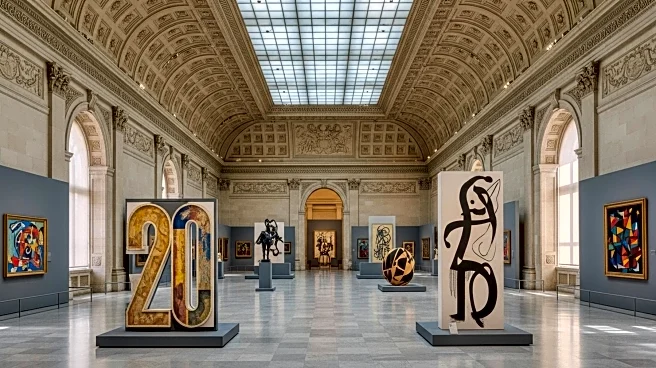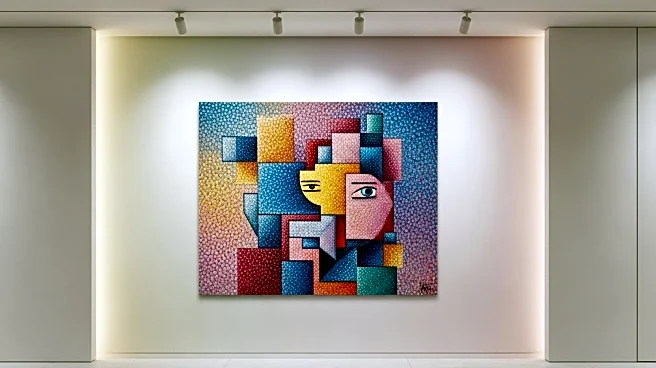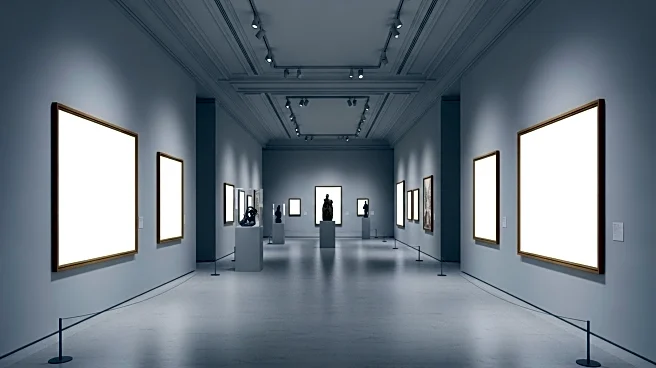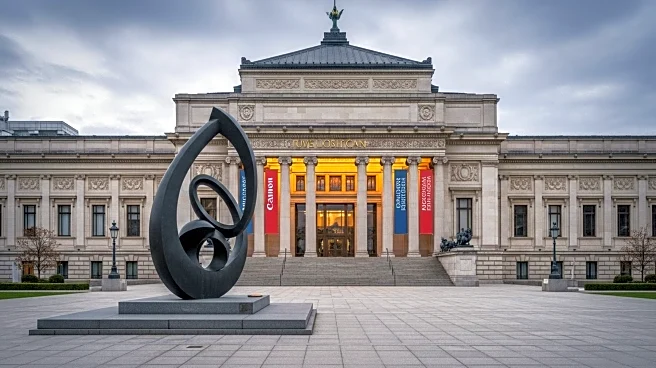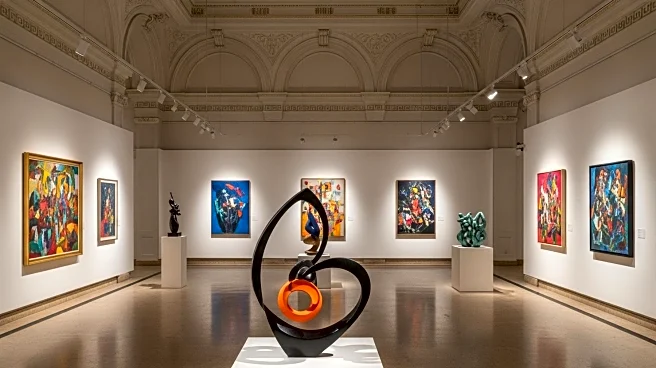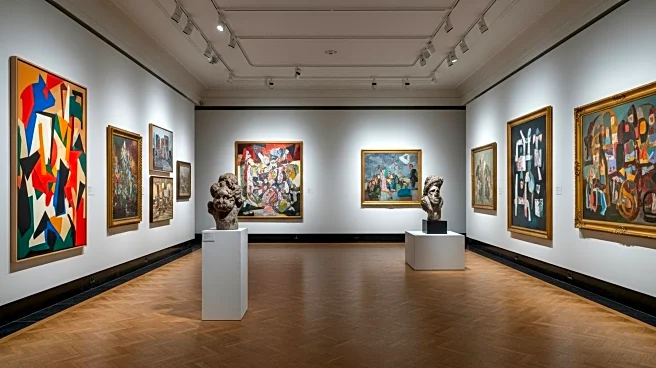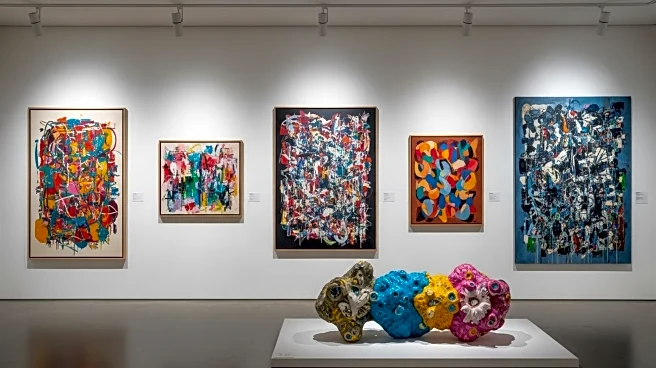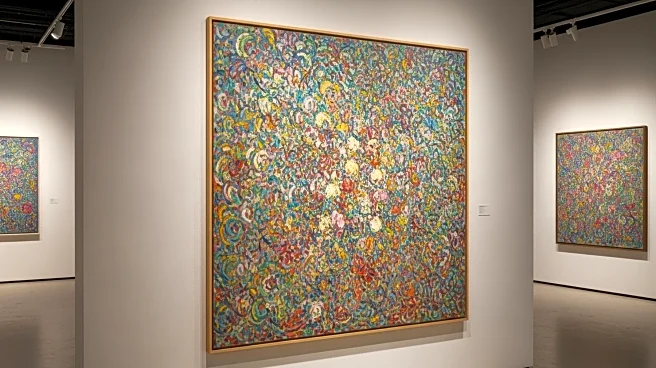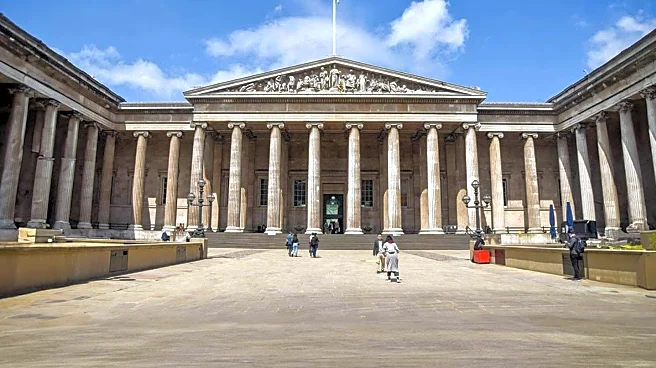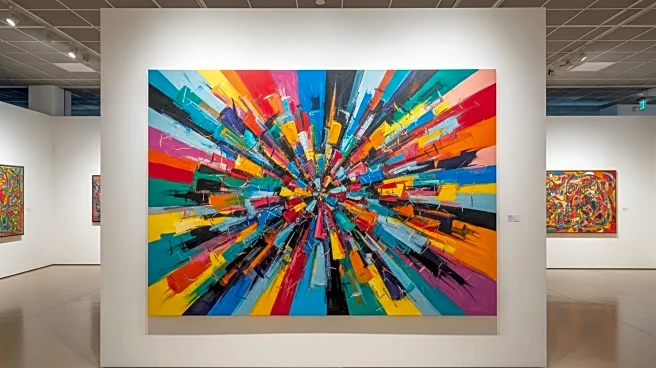What is the story about?
What's Happening?
The National Gallery has announced a significant change in its exhibition policy by removing the 1900 cut-off date for its collection, allowing it to include 20th-century paintings. This decision marks a departure from its previous limitation, which excluded many pivotal developments in modern art. The gallery plans to build a new wing dedicated to 20th-century painting, addressing a long-standing gap in its representation of art history. This move is expected to enhance the gallery's narrative by including influential works that shaped modern art movements, such as cubism and abstraction. The decision comes amid concerns about potential conflicts with the Tate, another major art institution in the UK, which also showcases modern art. However, both galleries have formed a joint working group to collaborate on the national collection, aiming to avoid competition and ensure a comprehensive representation of art history.
Why It's Important?
The inclusion of 20th-century art in the National Gallery's collection is a significant development for art enthusiasts and historians. It allows the gallery to present a more complete narrative of art history, showcasing the evolution of painting through the 20th century. This change is particularly important as it acknowledges the contributions of women and artists of color, who have historically been underrepresented. By expanding its collection, the National Gallery can offer a more diverse and inclusive perspective, reflecting broader societal changes and artistic innovations. This move also highlights the importance of collaboration between major art institutions to enhance public access to a wider range of artworks, fostering a deeper understanding and appreciation of modern art.
What's Next?
The National Gallery's decision to expand its collection to include 20th-century art will likely lead to increased collaboration with the Tate and other art institutions. This collaboration aims to ensure that both galleries can complement each other's collections without overlapping or competing for the same artworks. The new wing dedicated to 20th-century painting is expected to attract more visitors and provide educational opportunities about the developments in modern art. Additionally, the gallery may face challenges in acquiring significant works from the 20th century, requiring strategic planning and partnerships to secure important pieces for its collection.
Beyond the Headlines
The decision to include 20th-century art in the National Gallery's collection has deeper implications for the art world. It challenges traditional narratives and encourages a reevaluation of what constitutes significant art history. By showcasing works by women and artists of color, the gallery can address historical biases and promote a more equitable representation of artistic contributions. This shift also reflects broader cultural movements towards inclusivity and diversity, aligning with contemporary values and societal changes. The gallery's expansion offers an opportunity to engage with new audiences and inspire future generations of artists and art lovers.
AI Generated Content
Do you find this article useful?
